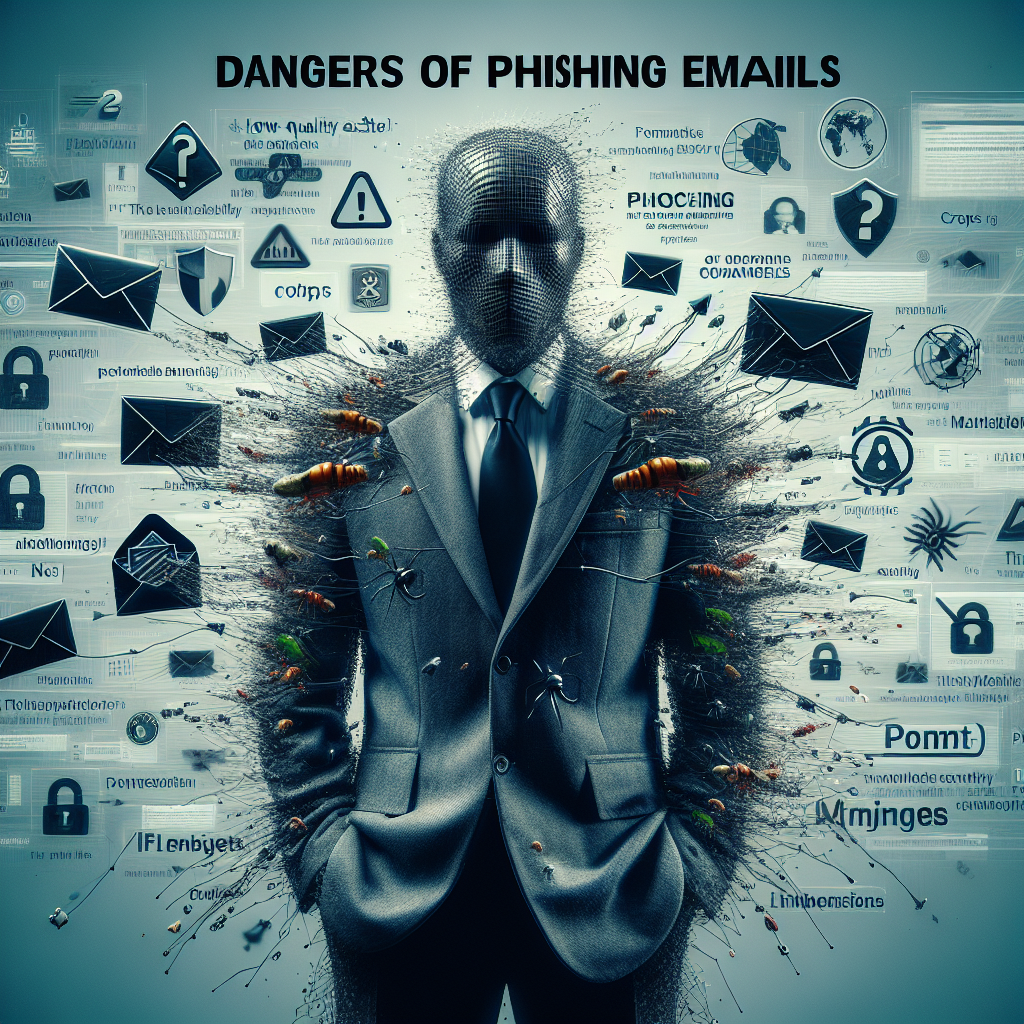In today's digital age, professionals are constantly navigating the intricate landscape of cybersecurity. One of the most prevalent threats faced by individuals and organizations alike is the deceptive practice of phishing emails. These malicious emails are crafted to trick recipients into disclosing sensitive information or downloading harmful content, posing significant risks to both personal and corporate data security.
Let's delve into the world of phishing emails and explore essential tips to protect yourself and your organization from falling victim to these cyber threats.
1. Recognize the Red Flags

Phishing emails often exhibit certain warning signs that can help you identify them. Be wary of messages requesting urgent action, containing suspicious links or attachments, or displaying poor grammar and spelling. Vigilance is key in spotting these red flags and safeguarding your data.
2. Verify the Sender
Before interacting with any email, verify the legitimacy of the sender. Pay close attention to the email address and look for any inconsistencies or irregularities. Cybercriminals often use fake or subtly altered email addresses to mimic reputable sources, aiming to deceive unsuspecting recipients.
3. Think Before Clicking

Exercise caution when dealing with links or attachments in emails, especially if they prompt you to provide personal information or login credentials. Hover over hyperlinks to preview the actual destination and avoid clicking on unfamiliar URLs to prevent falling into a phishing trap.
4. Stay Informed and Educated
Maintaining awareness of the evolving tactics used by cybercriminals is crucial in enhancing your cybersecurity posture. Stay informed about the latest phishing trends, security best practices, and emerging threats to better equip yourself in identifying and mitigating potential risks.
5. Implement Multi-Factor Authentication
Enhance the security of your accounts and systems by implementing multi-factor authentication (MFA). By requiring additional verification beyond passwords, MFA adds an extra layer of protection against unauthorized access, reducing the likelihood of successful phishing attempts.
6. Report Suspected Phishing Attempts
If you encounter a suspicious email, promptly report it to your organization's IT security team or the appropriate authorities. Reporting phishing attempts not only protects you but also aids in identifying patterns and preventing future attacks within your network.
7. Conduct Regular Security Awareness Training
Empower yourself and your colleagues with comprehensive security awareness training programs. Educating employees on cybersecurity best practices, including how to identify and respond to phishing emails, is instrumental in fortifying your organization's defenses against cyber threats.
Staying Vigilant in the Digital Realm
In conclusion, phishing emails pose a significant threat to professionals in today's interconnected world. By recognizing the warning signs, verifying senders, exercising caution with links, staying informed, implementing security measures, and fostering a culture of security awareness, you can bolster your defenses against malicious cyber activities.
Remember, proactive cybersecurity practices are paramount in safeguarding your data and minimizing the risks associated with phishing scams. Stay vigilant, stay informed, and stay secure in the ever-evolving digital realm.
By following these proactive steps and remaining vigilant, professionals can significantly reduce the risks associated with phishing emails and enhance their cybersecurity resilience.
Should you require help with taking proactive steps towards cyber security and email security, do not hesitate to reach out to Dan Good Systems for a complimentary assessment of your current cyber defenses today!
SEO Keywords: Phishing Emails, Cybersecurity, Data Security, Phishing Awareness, Multi-Factor Authentication, Security Training, Cyber Threats
Comments